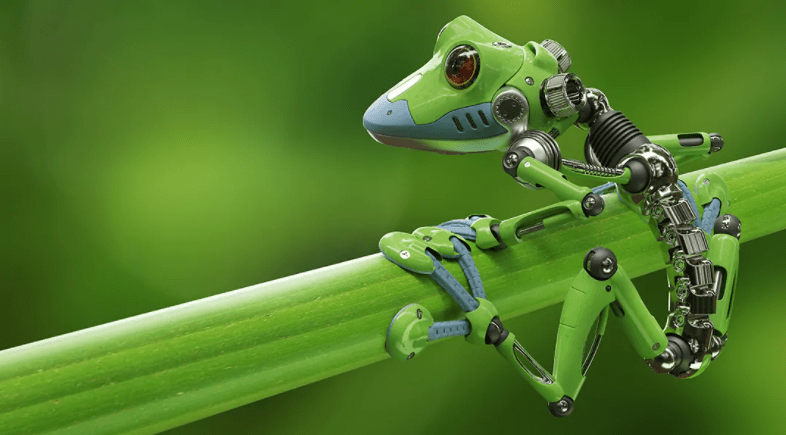Xenobots, or living robots, are tiny drop-shaped artificial living organisms, no more than one millimeter in diameter. They are created from the stem cells of a particular species of African frogs. Xenobots first appeared in a 2020 experiment. The result exceeded expectations – they could move, heal themselves and even work in groups. But, as it turned out later, their abilities don’t stop there. Scientists who created the world’s first living robots discovered that they reproduce. And the form of reproduction they use is entirely new for animals and plants. It is called kinematic replication. Previously, scientists observed it exclusively at the molecular level. According to the authors of the work, they were amazed by this discovery.
Biorobots and stem cells – what are they
When it comes to robots, we always imagine complex metallic mechanisms. But according to lead study author Josh Bongard, a professor at the University of Vermont, it doesn’t matter what the robot is made of. All that matters is what it can do, namely whether it can perform any actions on its own and solve specific tasks set by humans.
Given this definition, xenobots are robots because they are designed to perform certain actions. But at the same time, they are also living organisms, as they are created from frog stem cells. Stem cells have no specific purpose but can transform into any specialized cells.
The peculiarity of stem cells is that they are unspecialized cells that can differentiate into specialized cells. In other words, they initially have no specific purpose but can modify and replace any specialized cells. To create xenobots, the authors took samples of living stem cells from frog embryos and then allowed them to incubate.
The xenobots are spherical and include approximately 3,000 cells. Their development is still in its very early stages. They were created simply as an experiment and had no practical application. They cannot even be called a technology yet, but rather a phenomenon similar to the first computers that appeared in the 1940s.
Xenobots were created from the stem cells of the African Clawed Frog. However, as the creators of living robots suggest, the combination of molecular biology and artificial intelligence is a promising direction, which in the future will allow solving many problems of mankind. For example, they can collect microplastics in the world’s oceans.
DARPA funded the research. Few people know, but this agency gave the world the Internet. The technology that DARPA oversees is partly military in nature. Is this not food for thought for conspiracy theorists?
Nevertheless, xenobots are already beginning to surprise scientists. As it turned out, they are able to reproduce their own kind, as described in a study published in PNAS.
How living robots began to reproduce their own kind.
Self-reproducing xenobots are an extremely rare phenomenon that occurs under certain circumstances. As I said above, the reproduction method they use is called kinematic replication. Previously, it was observed only at the molecular level. The principle boils down to the fact that molecules use certain suitable blocks to create similar molecules.
“Frogs reproduce in the usual way. But when the cells are separated from the rest of the embryo, they have the opportunity to engage new biological processes in a new environment. As a result, stem cell robots have learned not only to move in space but also to reproduce,” says Michael Levine, one of the authors and essay writers of the study and director of the Allen Center for Discovery at Tufts University.
Xenobots reproduce on the same principle as molecules – they find suitable cells and build similar groups from them. It should be noted that this process does not require any action at the genetic level. Previously, scientists have never observed a similar phenomenon in either groups or single cells.
Having discovered this phenomenon, scientists decided to increase the reproduction rate. To do this, they gave xenobots the optimal shape for kinematic replication. It turned out to be a C-shape, strikingly similar to the character of the legendary game Pac-Man. They use their mouth (recess) to collect material to form a new xenobot.















